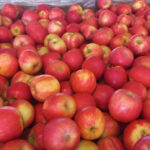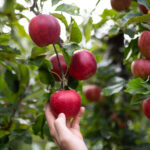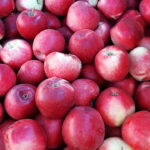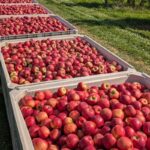U.S.-bound Chilean apple exports take a hit

The Chilean apple industry has seen a year-on-year reduction in its total exports so far this season, with the sharpest decline seen in trade with the U.S.
Data from Chilean Fruit Exporters' Association ASOEX shows the country has exported 550,000 metric tons (MT) to all markets this season - 10% lower year-on-year.
Exports to the U.S. stand at 79,713MT, representing a 19% drop.
Shipments have fallen to most destinations, albeit to lesser degrees - Latin America (- 17%), Canada (- 12%), the Far East (- 9%), and the Middle East (- 6%).
Europe is the only destination that has seen an increase (+5%).
Returns have also tumbled, with the Office of Agricultural Research and Policy (ODEPA) reporting the average price of fresh conventional and organic apples exported to the U.S. between January and June was US$0.87, compared to US$1.52 last year.
A representative of Chile-based market intelligence company Decofrut explained one of the reasons behind the situation.
"If we look at the Gala group of apples, the main variety that Chile exports to the U.S., the main problem this year in the North American market was the abundance of domestic supply, which strongly affected sales of Chilean apples during the first half of the season," information manager Andrea Betinyani said.
The U.S. Apple Association had forecast around 248 million boxes of fruit to be produced throughout the country in the 2016-17 season.
Antonio Walker, president of regional Chilean fruit grower association Fruséptima, explained there had been "tremendous" volumes of U.S. apples and a high proportion of larger sizes.
"The message we therefore received from the start was that the market was going to need medium-sized apples to satisfy the programs," he said.
Walker said while the fruit sizing had complied with the market requirements, the color did not. The U.S. needed fruit to be at least 50% colored, but he explained weather factors had made that difficult.
"This year was not a season in which apples had good color," he said.
"At the start of the year there were some very high temperatures in Chile, which put some stress on the trees. In addition, for the color change we needed 20 days of between 8-10ºC (46-50ºF) for the nights before the harvest, and we didn't get that."
Late season prices improve
Betinyani said opening prices for Gala had been much lower year-on-year due to the high volumes of local apples.
"In general the market remained slow for the weeks after that, with poor prices that hit their low point around week 16 of this year. After that, there was slow but stable rotation in the market and prices didn't change much," she said.
"Mid-way through the season interest in Chilean apples began to improve slowly, allowing for some small price increases, which at the start of June exceeded 2016 prices for the first time."
The U.S. may not be the Chilean apple industry's main destination - with Latin America and Europe (Germany, France, Italy and Spain) leading the way - but the country is working to enjoy improved future campaigns.
"We are ripping out old apple orchards, all the obsolete varieties, and planting new varieties that have really good taste and quality," Walker said.
"We believe that in the future the key will be quality. Having good production per hectare with good varieties is the only way to be successful. The Northern Hemisphere has greatly improved the quality of its apples and we must do that too."
Photo: www.shutterstock.com














































